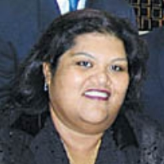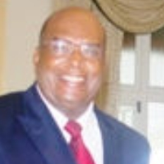Overview
Rags to riches to rags again. That is, unfortunately, the story of Nauru. Just a few years ago, it was one of the wealthiest nations in the world, paying for a huge bloated government with proceeds from sales of its phosphate. The island, however, is only about nine square miles and the phosphate was finite. Now it’s almost all gone. The Nauruan government used the phosphate profits to purchase land and other real estate around the world so that the nation would have income after the phosphate was mined out. Unfortunately, the government used the properties to borrow more money, and now those properties have been lost. The Nauruan people, who struggled for years to gain control of their own resource, which had previously been exploited by others (primarily Australia), now find themselves going from objects of envy to just another Pacific island people staring at an uncertain future.
more
less
Basic Information
Location: Nauru is located just south of the Equator, northeast of Papua New Guinea, south of the Marshall Islands and west of Kiribati. It is a single raised coral island consisting of only 21 square kilometers of land.
Population: 13,770 (2008 est.)
Religions: Protestant: 66.66%; Roman Catholic: 33.33%
Ethnic Groups: Nauruan: 58%; other Pacific Islanders: 26% (mostly Tuvaluans and Gilbertese); Chinese: 8%; European: 8%
Languages: Nauruan and English.
more
less
History
Nauru’s extreme isolation played a big part in its historical development. The origin of the indigenous people is not entirely clear and their language is fairly distinct from other Micronesian languages. Frequent dry spells kept the population limited, and strong currents could often push fishing canoes west into empty ocean from which they sometimes didn’t return. There is a fertile belt around the shore of the island and around a brackish lagoon in the interior. The center of the island, at one time made up of almost pure phosphate, was useless for living or agriculture. Eventually, beachcombers and traders settled in, intermarrying with the Nauruans. In 1878 a civil war erupted among various alliances of the traditional districts, and the killing was non-stop. In 1888 the Germans came in and, through force of arms, confiscated all guns and put an end to the warfare. Germany then annexed Nauru. Protestant and Catholic missionaries arrived, and traditional dances were banned and the people started wearing western clothing.
Soon it was discovered that much of the island consisted of a high grade of phosphate, a mineral vitally important as a fertilizer. The Germans allowed Australian, British, and New Zealand interests to mine the phosphate, but the Nauruans were not fairly compensated. During World War I, the Australian military forces captured Nauru from the Germans, just before a Japanese force arrived with the same intent. The Japanese forces withdrew, and at the end of the war Nauru became a League of Nations mandated territory administered by Australia. Phosphate mining continued, again with little or no compensation for the Nauruans. During World War II the Japanese occupied Nauru, mined the phosphate, and forced the Nauruans to work there and on islands across Micronesia. Japanese treatment of the Nauruans was harsh. The end of WWII saw the defeat of the Japanese and the return of the Australians as Nauru became a United Nations trust territory administered by Australia. Full independence, and full control of the phosphate, was achieved in 1968.
Through the 1970s and 1980s, Nauru was one of the wealthiest countries in the world. Phosphate paid for everything, as the government took half the profits per ton (landowners took the other half) to fund the government and establish a trust fund to keep the revenue flowing when the phosphate ran out. Hotels, apartments, factories, and land were purchased all over Australia, the Pacific islands, and even in the United States. But by the late 1990s, with the phosphate almost gone, the government began borrowing against the trust fund investments. Blatant corruption by many government officials exacerbated the situation, and by the early 2000s, Nauru began losing its investment properties. Its government is now broke and dependent on Australia.
more
less
History of U.S. Relations with Nauru
Prior to independence, the United States had no direct relations with Nauru, only with its administering authority of Australia.
more
less
Where Does the Money Flow
In 2007, the United States imported $586,000 worth of goods from Nauru, most of that in fish and in U.S. goods returned or re-imported. The same year, the United States exported goods worth $8,140,000 to Nauru, most of that fish. The United States has no aid programs active in Nauru. Nauru still uses Australian currency and Australia provides military defense.
more
less
Nauru's Ambassador to the U.S.
 Moses, Marlene
Moses, Marlene
There is no Nauruan embassy in the United States but there is a Permanent Mission of the Republic of Nauru to the United Nations, and its Representative is considered the ambassador to both the United Nations and the United States. Since June 2005 that has been Marlene Moses, who was born on Nauru in 1961. Moses was educated at the Canberra College of Advanced Education (currently the University of Canberra) and at Monash University, the largest in Australia. She joined the Nauru Foreign Service in 1983 as a Foreign Affairs Officer. She served as Consul in Tokyo, Japan, from 1988 to 1990, and then as Consul-General in Auckland, New Zealand, from 1991-1995. This was followed by an appointment as Assistant Director in the Department of Foreign Affairs from 1995 to 1996. Moses then became chairperson of the Lands Negotiation Committee, coordinator of the Economic Strategy Committee, and a member of the Nauru Rehabilitation Corporation – Land Use Planning Committee. From 1999 to 2000 she served as Permanent Secretary for Internal Affairs, and then from 2000 to 2003 as Permanent Secretary for Health and Medical Services. In November 2003 Moses was appointed Nauru’s Deputy Permanent Representative to the United Nations.
more
less
 Moses, Marlene
Moses, Marlene


 Moses, Marlene
Moses, Marlene









Comments